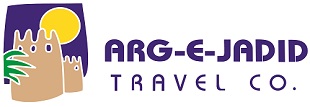
Although Persian (Farsi) is the predominant and official language of Iran, a number of languages and dialects from three language families—Indo-European, Altaic, and Afro-Asiatic—are spoken. Roughly three-fourths of Iranians speak one of the Indo-European languages. Slightly more than half the population speak a dialect of Persian, an Iranian language of the Indo-Iranian group. Literary Persian, the language’s more refined variant, is understood to some degree by most Iranians. Persian is also the predominant language of literature, journalism, and the sciences. Less than one-tenth of the population speaks Kurdish. The Lurs and Bakhtyārī both speak Lurī, a language distinct from, but closely related to, Persian. Armenian, a single language of the Indo-European family, is spoken only by the Armenian minority. The Altaic family is represented overwhelmingly by the Turkic languages, which are spoken by roughly one-fourth of the population; most speak Azerbaijanian, a language similar to modern Turkish. The Turkmen language, another Turkic language, is spoken in Iran by only a small number of Turkmen. Of the Semitic languages—from the Afro-Asiatic family—Arabic is the most widely spoken, but only a small percentage of the population speaks it as a native tongue. The main importance of the Arabic language in Iran is historical and religious. Following the Islamic conquest of Persia, Arabic virtually subsumed Persian as a literary tongue. Since that time Persian has adopted a large number of Arabic words—perhaps one-third or more of its lexicon—and borrowed grammatical constructions from Classical and, in some instances, colloquial Arabic. European languages are used less commonly but are still taught at schools and universities. https://www.britannica.com/place/Iran/Languages